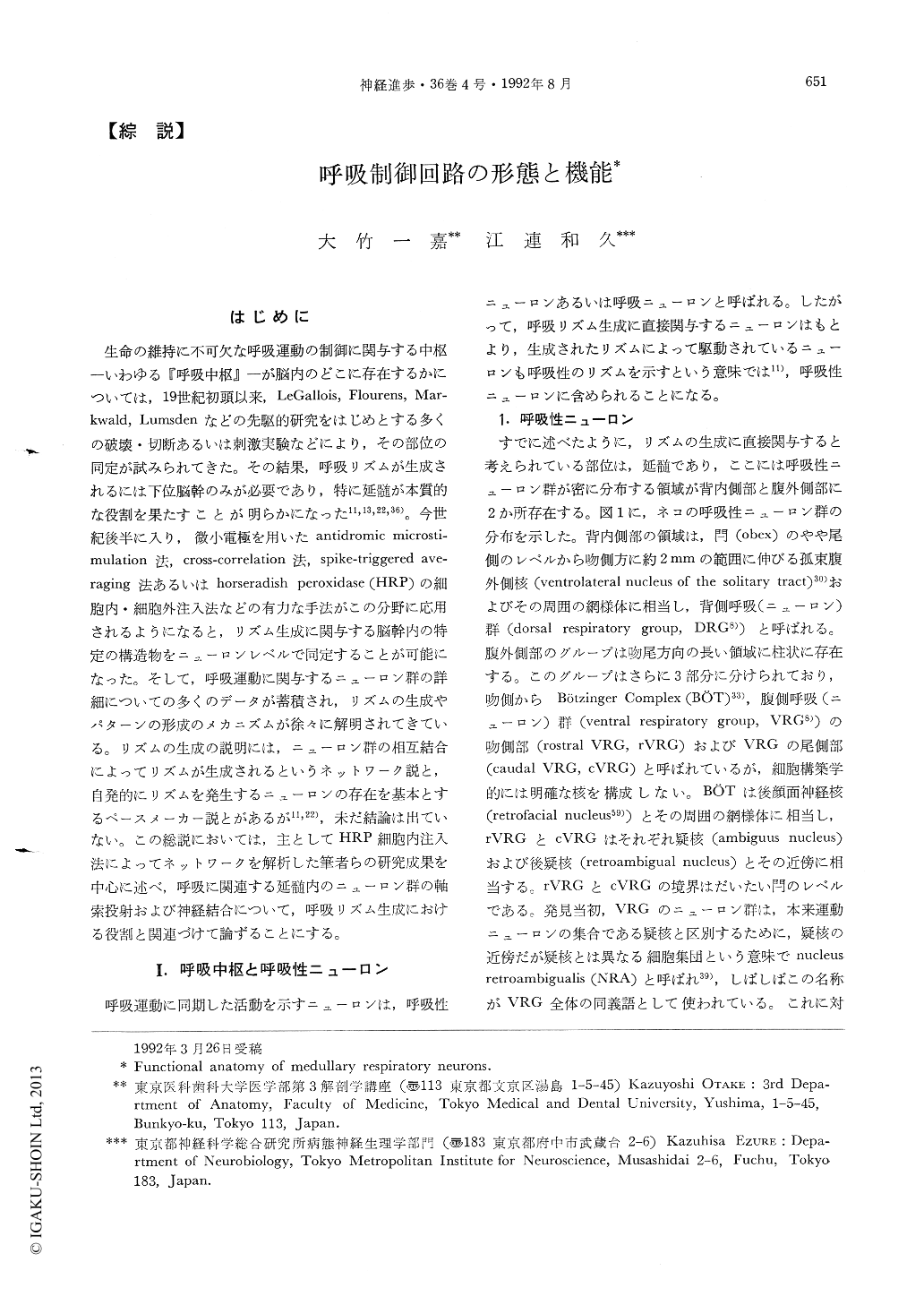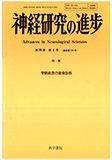Japanese
English
- 有料閲覧
- Abstract 文献概要
- 1ページ目 Look Inside
はじめに
生命の維持に不可欠な呼吸運動の制御に関与する中枢―いわゆる『呼吸中枢』―が脳内のどこに存在するかについては,19世紀初頭以来,LeGallois,Flourens,Markwald,Lumsdenなどの先駆的研究をはじめとする多くの破壊・切断あるいは刺激実験などにより,その部位の同定が試みられてきた。その結果,呼吸リズムが生成されるには下位脳幹のみが必要であり,特に延髄が本質的な役割を果たすことが明らかになった11,13,22,36)。今世紀後半に入り,微小電極を用いたantidromic microstimulation法,cross-correlation法,spike-triggered averaging法あるいはhorseradish peroxidase(HRP)の細胞内・細胞外注入法などの有力な手法がこの分野に応用されるようになると,リズム生成に関与する脳幹内の特定の構造物をニューロンレベルで同定することが可能になった。そして,呼吸運動に関与するニューロン群の詳細についての多くのデータが蓄積され,リズムの生成やパターンの形成のメカニズムが徐々に解明されてきている。リズムの生成の説明には,ニューロン群の相互結合によってリズムが生成されるというネットワーク説と,自発的にリズムを発生するニューロンの存在を基本とするペースメーカー説とがあるが11,22),未だ結論は出ていない。この総説においては,主としてHRP細胞内注入法によってネットワークを解析した筆者らの研究成果を中心に述べ,呼吸に関連する延髄内のニューロン群の軸索投射および神経結合について,呼吸リズム生成における役割と関連づけて論ずることにする。
The neural mechanisms responsible for respiratory rhythmogenesis reside within the lower brainstem, especially the medulla oblongata. Various kinds of respiratory neurons, defined as neurons which fire in synchrony with respiration, are found in the medulla. This review focuses on the morphological and functional organization of these medullary respiratory neurons with special reference to the mechanisms of the generation and pattern formation of respiratory rhythm.
Medullary respiratory neurons are concentrated in two locations: dorsomedial and ventrolateral medullary areas.

Copyright © 1992, Igaku-Shoin Ltd. All rights reserved.


